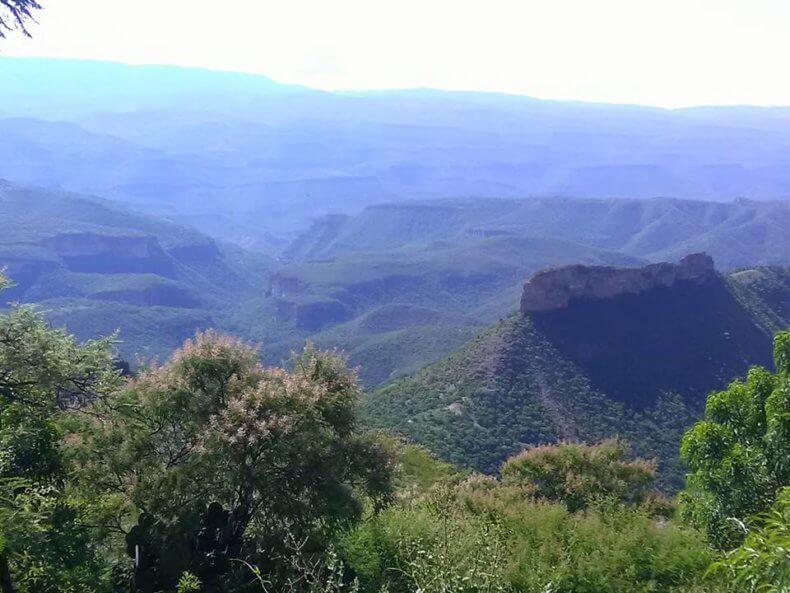
by Deep Green Resistance News Service | Sep 21, 2016 | Indigenous Autonomy, Reclamation & Expropriation
Featured image: The Wixárika community of San Sebastian Teponahuaxtlán or Wuaut+a is preparing to send 1,000 members to the remote Nayarit community of Huajimic to take back from the ranchers lands that the courts have ruled belong to the Wixárika. Photo from Facebook/San Sebastian Teponahuaxtlán.
by Tracy Barnett / Intercontinental Cry
A contingent of at least 1,000 indigenous Wixárika (Huichol) people in the Western Sierra Madre are gearing up to take back their lands after a legal decision in a decade-long land dispute with neighboring ranchers who have held the land for more than a century.
Ranchers who have been in possession of the 10,000 hectares in question for generations say the seizure is unlawful and that they will not hand over the land — setting the scene for a showdown that observers fear may end in violence.
Leaders of the Wixárika community of San Sebastian Teponahuaxtlán have announced their plans to accompany the authorities of the federal agricultural tribunal to carry out an enforcement action on the first parcel, a 184-hectare ranch in the state of Nayarit, on Sept. 22, and called on state and federal law enforcement officials to send police forces to prevent a conflict. Until the time of publication, neither the Nayarit nor the federal authorities had agreed to send police to maintain order, so both parties are hoping for the best but preparing for the worst.
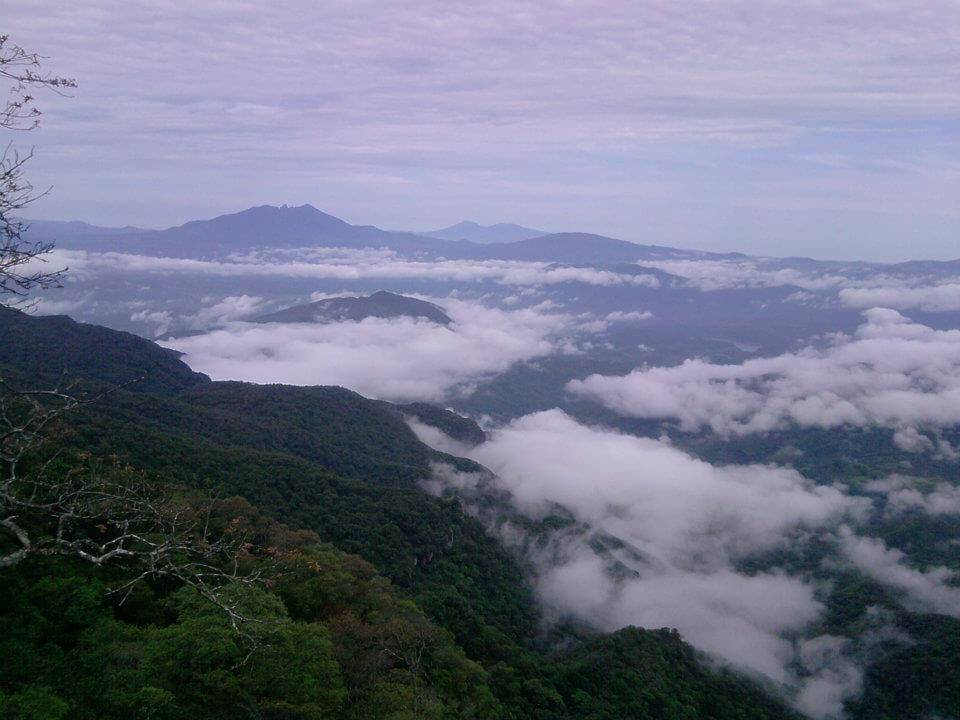
The Nayarit community of Huajimic in the municipality of La Yesca has a long tradition of ranching. Ranchers of Huajimic have titles to their land that date to 1906, but the courts have ruled that the Wixarika land claims go back to the Spanish land grant of 1717. Photo from Facebook/Huajmic, Nayarit.
“We’re hoping they’ll accept the decision which is now law: that they lost the trial. They had the opportunity to legally prove that they really had the documentation and they didn’t have it,” said Miguel Vázquez Torres, president of the communal lands commission of San Sebastian. He is aware of the potential for violence, he said, “but the community is not going to sit with its hands crossed. We are prepared.”
Ranchers have titles to the land that go back to the early 1900s — but San Sebastian has the original grant from the Spanish crown that dates to 1717, and is backed by a 1953 presidential resolution. In all, 10,000 hectares is at stake, for a total of 47 different claims. The agrarian court has ruled in favor of San Sebastian in 13 of those cases; the remainder are still in process.
Rosa Carmen Dominguez Macarty, an attorney representing some of the ranchers of Huajimic, disputes the version presented by Wixarika attorneys, saying that only two of the sentences are definitive, and that all the rest are still under appeal. The ranchers are appealing the 1953 presidential resolution, saying it is based on a document that is invalid.
“It’s a social injustice,” she said. “These are very simple people; they are fathers, they are mothers who work the land themselves, and that’s how they support their families. It would be really sad if through the government’s disregard, something unpleasant were to happen.”
Vázquez said that two families who have no land have already been granted permission by the community assembly to establish homesteads on the parcel and that the assembly plans to send a rotating contingent of community residents to stand guard for several months — “as long as it’s necessary so that the families can feel safe and comfortable.” The long-term plan, he said, is to establish another settlement in the area, as San Sebastian’s existing towns are becoming overcrowded.
Dominguez argued that the local inhabitants have worked the land for generations and turned it into a highly productive area. Local residents suspect the Huicholes have another ulterior motive for taking back the land, which they have never worked: to exploit the mineral deposits that supposedly lie beneath.

Members of the Wixarika community of San Sebastian Teponahuaxtlán protesting for land reform in Guadalajara in 2014. Photo from the Facebook/San Sebastian(Wuaut+a).
Complicating matters is that San Sebastian lies in the state of Jalisco, while the contested land lies in Nayarit, where the ranchers have been outspoken in their opposition to the court decision and have been organizing in resistance to the return of the land to the Wixárika.
“Jalisco vs. Nayarit: Blood will run,” screamed one headline in a Nayarit newspaper. Meanwhile, Nayarit Gov. Roberto Sandoval reportedly has sent messages of support to ranchers.
“The governor promised us that while he is in office, we would not have to turn over a single meter of land to the Huichols,” one of the landowners told local reporter Agustín Del Castillo of Milenio newspaper.
Indeed, it’s no accident that the conflict crosses state lines, according to anthropologist Paul Liffman, author of the book Huichol Territory and the Mexican Nation.
“In fact that’s the deep history of Jalisco and Nayarit,” Liffman said in a recent interview. “Nayarit was part of Jalisco, and it separated in 1917, in part for the ranchers who wanted more political autonomy and also wanted to kick out the Indians.”
During the early years of the 20th century, the government encouraged settlers to make land claims on apparently abandoned land. It was during that period that major encroachment began to occur on Wixárika land, and the courts granted titles based on the erroneous assumption (or pretext, as Liffman says) that the land was unoccupied.
Tensions have flared periodically since the land was taken but the Wixárika had no legal recourse until the government created an agrarian court system in the 1990s, said Ruben Avila Tena, the attorney representing the community of San Sebastian. Soon afterwards that community began a legal process of reclaiming its land.
Jalisco law enforcement has agreed to be present, but only up to the state line; thus far the Wixárika leadership has received no such assurances from the Nayarit authorities, nor from the federal government.
“I’m not sure what the Jalisco police can do, besides cheering them on from the other side of the border,” commented Avila Tena. “It’s actually a very worrisome situation.”
Avila said sources in the Agrarian Tribunal have told them that the Nayarit police have no intention of supporting the Wixárika on Sept. 22. Agrarian Magistrate Aldo Saul Muñoz López spoke to this reporter by telephone but said he could not grant an interview by telephone, only in person in the Tribunal regional offices in Tepic, Nayarit.
“We did what corresponds to us as a federal tribunal, we notified all of the relevant authorities of Nayarit. If they don’t respond, it’s something that escapes my authority,” said Muñoz López, but would not give further information by phone.
Liffman likened the current conflict in San Sebastian with one that arose in the 1950s under the Huichol leader Pedro de Haro. Haro built a movement that ultimately procured the 1953 presidential resolution confirming that San Sebastian was the legal owner of the land. But as in the present case, the government didn’t provide any enforcement mechanism, and the local residents refused to give up the land. A band of armed Huichols took the matter into their own hands and marched to the Canyon of Camotlán, where they reportedly burned down a farm, drove out local residents and reclaimed the land.
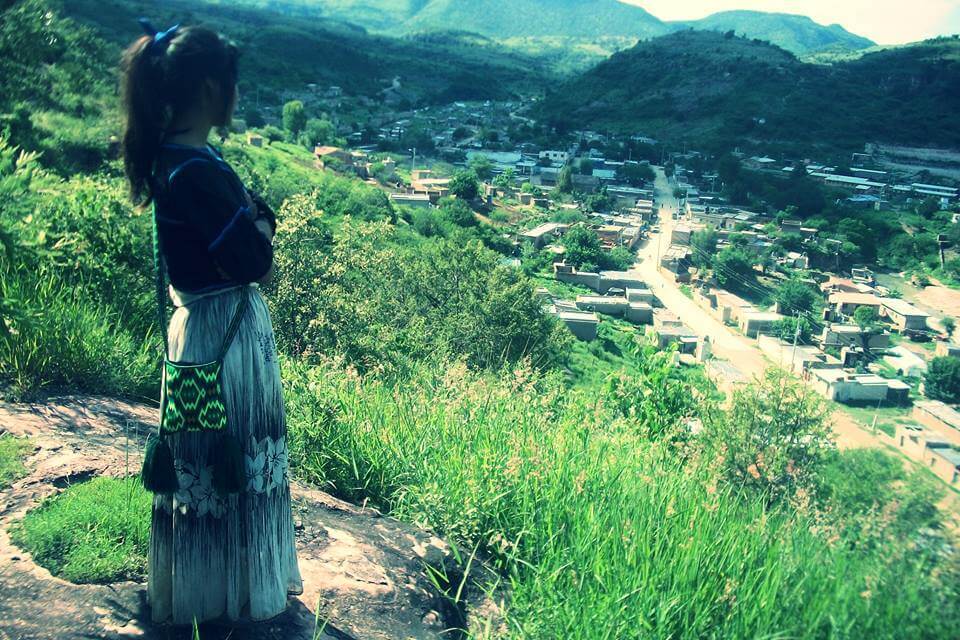
Photo from the Facebook pages of the community of San Sebastian (Wuaut+a).
Santos de la Cruz Carrillo, a Wixárika leader and also an attorney on San Sebastian’s legal team, said the community has been urging the federal authorities to attend to this case for five years under a program that would offer financial compensation to the current landholders.
“It’s been five years since the community of San Sebastian asked the federal government to attend to this situation, to support the landholders with compensation”, said de la Cruz. “But the ranchers showed no interest in the compensation; they always said they want the land, so the community chose to take possession.”
Finally, in a meeting in March of this year, an official with that program told San Sebastian authorities that there was no money to pay restitution to the ranchers. That’s when they made the decision to move ahead with the process of retaking the lands, said Avila.
The Wixárika authorities have done everything in their power to seek compensation for the ranchers in the hope that a conflict could be avoided, said Avila. “This case was decided in their favor more than two years ago,” he stressed. “The community didn’t want it to be enforced like this, they were trying to get the federal government to indemnify the landholders. When they couldn’t do that anymore, they said, it can’t be helped, we will have to ask the tribunal to enforce the law.”
Liffman warned that the situation was not to be taken lightly; the area has changed radically since the times of Pedro de Haro, he said, with a significant amount of drug production now occurring throughout the territory.
“The region has become much more heavily armed,” he said. “San Sebastian has been the most violently disputed area in the sierra over the past several years…. it’s big-scale transnational narcos now, it’s not just some ranchers with pistols on their belts. So if it does come to that, it could be a bloodbath.”
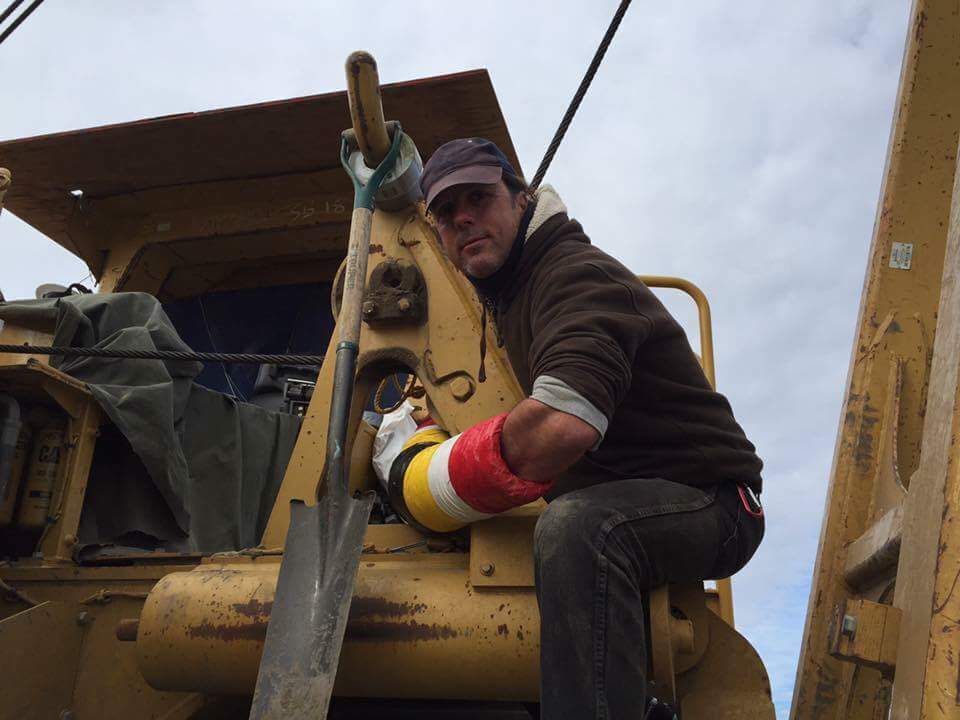
by Deep Green Resistance News Service | Sep 15, 2016 | Obstruction & Occupation
by Red Warrior Camp
Mandan, ND… Water protectors stopped construction at two Dakota Access Pipeline sites on September 13, northwest of Mandan through nonviolent direct action.
At approximately 10:30 a.m. CST, two water protectors “locked down” to heavy equipment at the first action site. One of the individuals was locked onto the machine for nearly 7 hours.
Trained medics, media, legal observers and police liaisons were on hand to offer support and were also arrested.
Separately, water protectors successfully and peacefully stopped construction at the second site. A worker pepper sprayed one of the water protectors before leaving the scene.
Law enforcement began to arrive within the hour, followed by a large bus load of police dressed in full riot gear. An initial police line was formed with officers toting pellet guns. Filing in behind them was a second line of officers pointing large semi-automatic rifles at the water protectors.
The water protectors were immediately told that they were trespassing and subject to arrest. Morton County Sheriff’s office confirmed that there were 22 water protectors in custody by 4:00 p.m. The majority of those arrested are charged with Criminal Trespass, a Class B Misdemeanor.
The two individuals who locked down to the equipment are charged with Criminal Trespass, Disorderly Conduct, and Obstruction of a Government Function.
The Morton County Jail booking process of the water protectors continued on into the evening hours. Jail officials informed the Camp’s legal team that the ND States Attorney, Al Koppy, had ordered that only a North Dakota licensed attorney could visit the jailed water protectors, which is a violation of their constitutional right to counsel of their choosing for initial consultation.
The volunteer legal team assisting the water protectors called upon Chad Nodland, a local attorney who was also met with resistance by Morton County Jail staff. Although some of the inmates had been processed, the jailers informed Nodland that he would have to wait until all 22 arrested were processed before he could speak to them individually.
Morton County Sheriff’s Office refused to comment at press time. The water protectors’ bond hearing is scheduled for 1 p.m. CST on Wednesday, September 14th at Morton County Court House in Mandan, ND.
To support supplies for the Camp and the ever-increasing legal costs from the Red Warrior Camp please visit our website and click on DONATE.

by Deep Green Resistance News Service | Sep 3, 2016 | Obstruction & Occupation
By Direct Action Spokane
Shortly before noon on August 21, a group of Spokane citizens occupied BNSF railroad tracks to protest the transport and eventual burning of fossil fuels in defense of climate change. The peaceful, non-violent direct action consisted of 30 protesters and eventually three arrests. The three people arrested were Nancy Nelson, Margie Heller, and Deena Romoff, all of whom are associated with the group Raging Grannies – an activist group dedicated to nonviolence in the name of social and environmental justice. The charges against each are obstructing a train and misdemeanor trespass.
Today’s action in Spokane blocked a number of rail lines including an empty oil car train headed east and a fully loaded coal train headed west. The track occupation stopped all rail traffic for over one and a half hours.
“There is incredible denial surrounding this issue of fossil fuels and no one is talking about the perils that await us if government and societies do not take action now,” said Deena Romoff, one of the arrestees, in a written statement that she read during today’s protest. “This is why I need to take action now…I can no longer wait!”
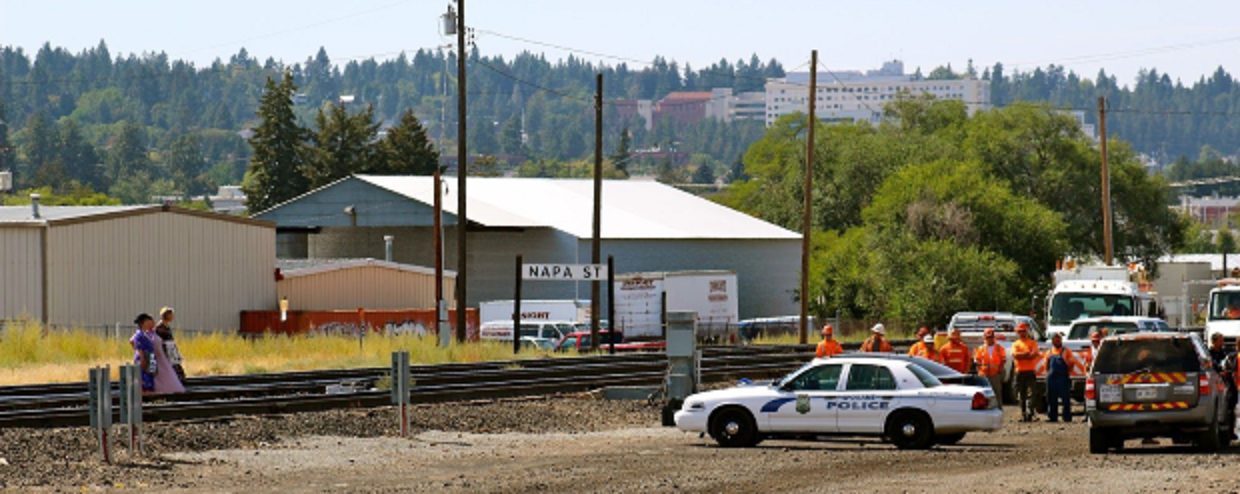
Trains from BNSF, Union Pacific, and Canadian Pacific that pass through the city and county of Spokane carry Bakken crude oil from North Dakota, Tar Sands crude oil from Canada, and coal from the Powder River Basin in Montana and Wyoming. The crude oil is bound for refineries in the Northwest and Canada and will eventually be burned domestically and internationally. The coal is bound for export terminals in the United States and Canada for shipment to Asia to be burned in coal-fired power plants.
“Transporting fossil fuels is done for one purpose only: they will be burned”, said Margie Heller in a prepared statement. “If burned, they will add to the greenhouse gases which are already causing serious climate change. Continuing to add to climate change factors puts the health and perhaps the very existence of future generations at risk”
Direct Action Spokane stands in solidarity with on-going actions around the country working to stop the extraction, transportation, processing, and burning of fossil fuels. Direct Action Spokane is also committed to stopping the transport of oil and coal trains through Spokane and calls on other communities, up and down the rail line, to do the same.
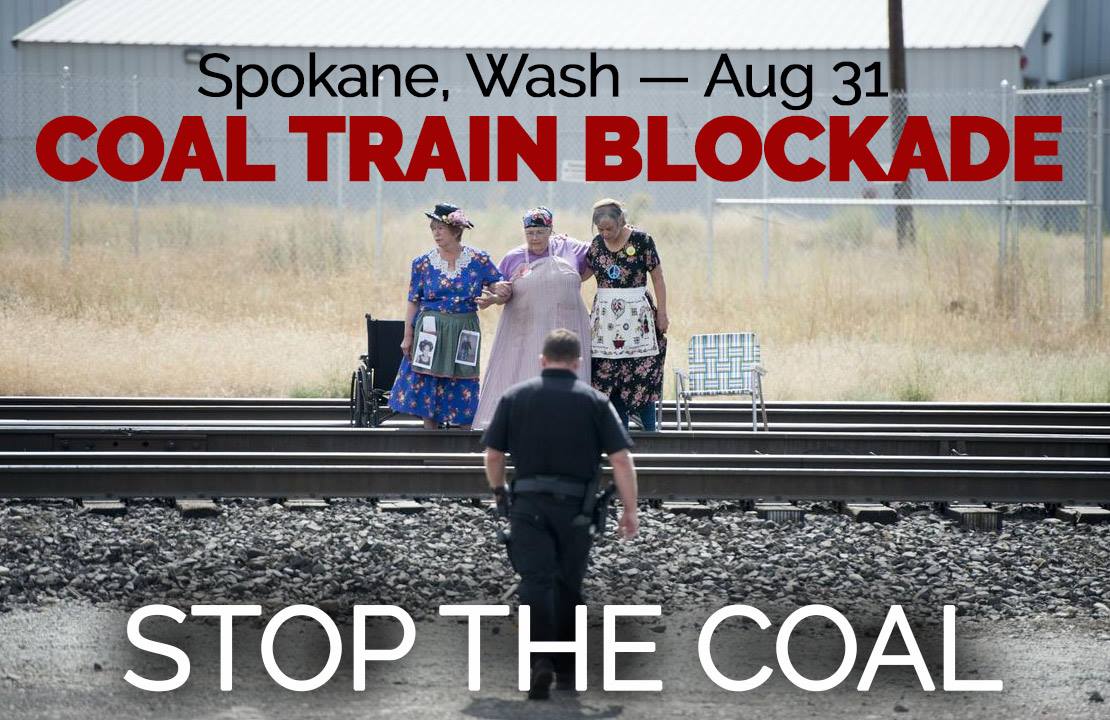
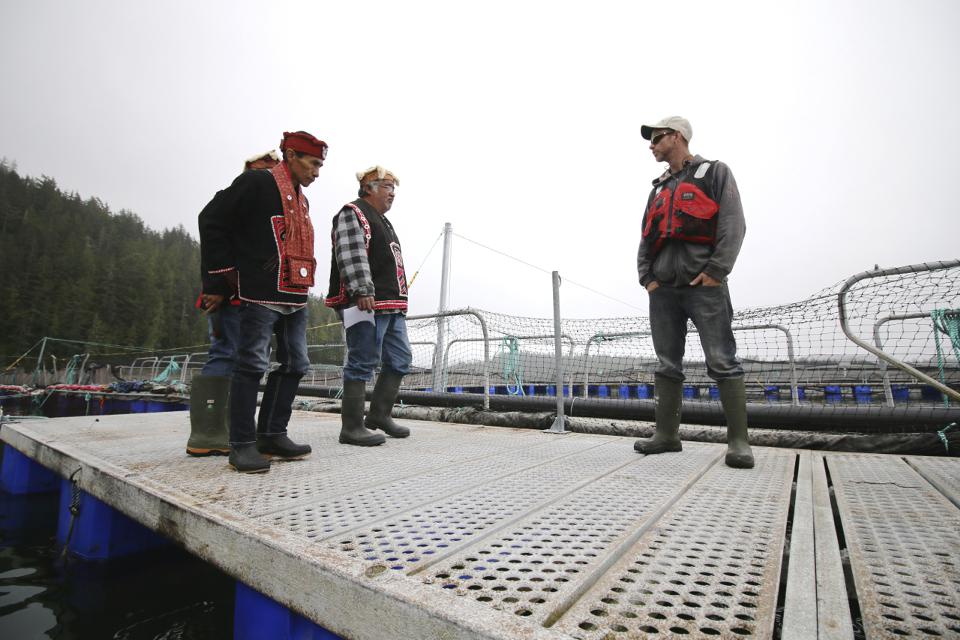
by Deep Green Resistance News Service | Sep 1, 2016 | Lobbying
Featured image: Leaders from Musgamagw Dzawada’enuxw First Nation recently boarded a BC fish farm to serve an eviction notice. Photo by Alexandra Morton.
By Andrew Nikiforuk / The Tyee
The Musgamagw Dzawada’enuxw, whose traditional lands includes much of the Broughton Archipelago, have boarded two Japanese-owned fish farms and delivered eviction orders to remove their operations from unceded territories over the last six days.
On Aug. 15, three Dzawada’enuxw traditional leaders served an eviction notice to a Cermaq/Mitsubishi salmon farm on the Burdwood Islands, and on Aug. 18 boats from the communities of Gwayasdums (Gilford Island), U’kwa’nalis (Kingcome Inlet) and Alert Bay arrived at the Sir Edmund Bay fish farms run by Cermaq/Mitsubishi to conduct a cleansing ceremony.
Melissa Willie, an elected councillor for the nation, said about 40 people participated in the cleansing ceremony and that more demonstrations are planned later this week.
Willie said a cleansing ceremony was necessary because fish farms have been clouded by a lot of “negativity” and environmental impacts, and her people wanted to do something positive.
“We will do a cleansing of our waters once we get these fish farms out,” Willie told The Tyee.
The Martin Sheen, a research vessel loaned by the Sea Shepherd Conservation Society to biologist and anti-fish farm activist Alexandra Morton, witnessed and filmed the delivery of the eviction notice as well as the cleansing ceremony.
Morton, a long-term foe of the controversial industry, is on a two-month mission to investigate the state of corporate fish farms, do research on virus prevalence, and provide a platform for First Nations.
Some nations support fish farms on their territory, while others such as Musgamagw Dzawada’enuxw have been fighting them and their impacts on wild fish for 30 years.
The eviction notice follows a number of developments, including the federal government’s decision to extend fish farm licences from one to six years despite recent evidence found by federal scientists of a “potential” heart disease in farmed Atlantic salmon samples collected from one B.C. fish farm.
Members of the Musgamagw Dzawada’enuxw were also shocked earlier this month when Melissa Willie visited a Cermaq farm and opened the lid of a blue-coloured tote containing dead fish netted from the facility.
Both Willie and Morton identified what they said looked like several wild salmon and other native fish (possibly herring and eulachon) in the pile. Fish farms do not have a licence to feed or harvest wild fish.
But in an Aug. 18 press release, Cermaq denied the dead fish were wild and said they were young farmed salmon.
“The small salmon carcasses found in the mort totes are Atlantic salmon grown from our own broodstock, not Pacific wild salmon as alleged. In fact, the tote in question was at our broodstock site, where we grow salmon that are several years apart in age. The age difference results in both small and large fish that, if they die, go into the same tote,” explained their press release.
Willie disagreed with Cermaq’s view of things.
“Wherever you have fish farms, there will be wild fish entering those pens. It is common sense. We all know that the herring stay by some of the farms and feed there.”
In the same press release, Cermaq accused the Sea Shepherd Society of trespassing on private property, making unsubstantiated claims, and having “taken samples of dead fish without permission and without following any proper scientific procedures.”
In contrast, Willie said her people would like to thank Sea Shepherd for joining them in their fight.
Notice gives three months to pack up
The eviction notice gives the corporate farms three months to pack up their operations.
It also demands that no more farmed fish be transferred into the First Nation’s traditional territory and that the nation be allowed to take fish samples from the farms anytime it wants to determine what types of disease or parasites might be present.
“The people who are benefiting from these farms are benefiting over the suffering of our people,” said Dzawada’enuxw hereditary leader Farron Soukochoff in a press release.
The Musgamagw Dzawada’enuxw First Nations have opposed corporate salmon farming on the grounds that open-net feedlots invite diseases and waste that have had a deleterious impact on wild fish, including herring and five varieties of Pacific salmon.
“We, the Musgamagw Dzawada’enuxw view the destruction of wild fish by the fish farming industry as part of the long history of genocide forced on our people by the governments of Canada,” reads an Aug. 18 press release. “Salmon are essential to our well-being and the well-being of our world.”
According to a recent report, the number of young wild salmon leaving Dzawada’enuxw territory in the spring of 2015 could have been reduced by nine to 39 per cent due to sea lice from salmon farms.
Along with the eviction notice, the Musgamagw Dzawada’enuxw have set up a website called “cleansing our waters.”
Approximately one-third of the corporate feedlots growing Atlantic salmon along B.C.’s coast are located on Dzawada’enuxw territory.
A 2008 scientific study found that wild salmon populations declined wherever corporations have set up industrial fish farms in the ocean including Norway, Scotland, Ireland and Canada.
“We have heard the words of Prime Minister Justin Trudeau, that honouring the rights of First Nations are a ‘sacred obligation’ to the Liberal Government of Canada,” said Musgamagw Dzawada’enuxw hereditary leader and chief councillor Willie Moon at a cleansing ceremony at the Sir Edmund salmon farm at the entrance to Kingcome Inlet.
“Our people have spoken: we want salmon farms out of our territory.”
In a prepared statement, Jeremy Dunn, executive director of the BC Salmon Farmers Association, said that the industry has 20 agreements with First Nations that cover “78 per cent of the annual harvest of farmed salmon.”
“Our members are always open to meeting and discussing issues with First Nations and would like to develop agreements in areas where they do not exist today,” added the statement.
Dunn told The Tyee that many First Nations have tried to evict corporate farms in the past but later signed financial agreements with the industry.
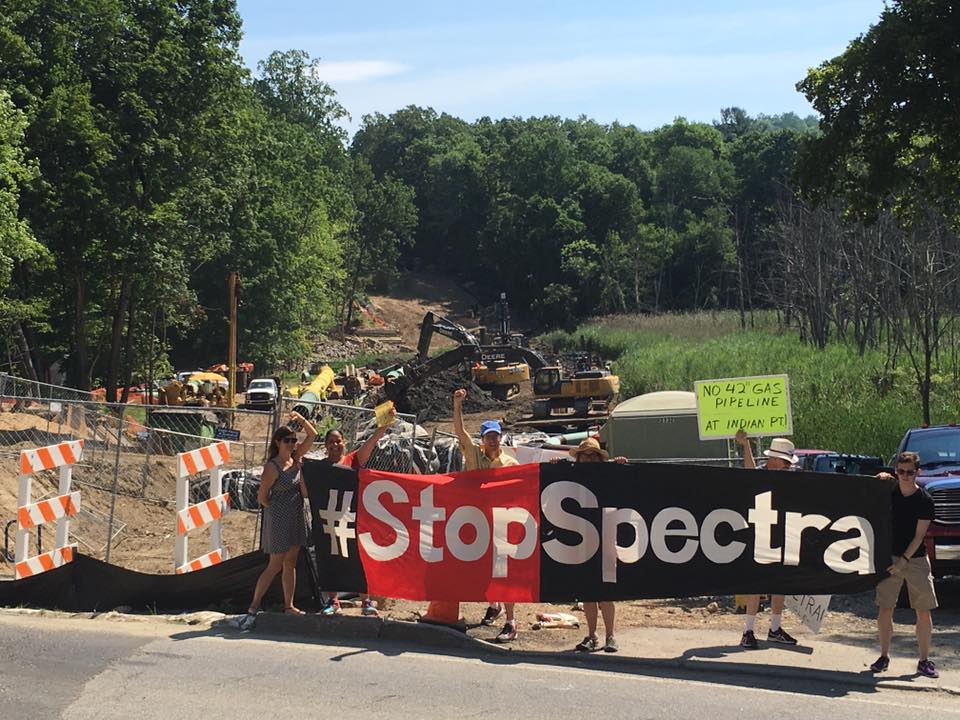
by Deep Green Resistance News Service | Aug 30, 2016 | Obstruction & Occupation
By ResistAIM
Brooklyn, NY – Concerned New Yorkers blocked the doors of National Grid’s downtown Brooklyn office at noon on Monday, August 29 to protest their support of Spectra Energy’s AIM Pipeline, a -brooklyn-demanding-national-grid-stop-support-spectra-energys-dangerous-aim-pipelinehigh-pressure methane gas pipeline that will bring fracked gas from Pennsylvania to New England. Members of 350Brooklyn.org, 350NYC.org, and ResistAIM came together to demand that National Grid end their contract agreement with Spectra Energy. The pipeline’s route runs 105 feet from infrastructure critical to the Indian Point Nuclear Power Plant in New York’s Westchester County. “National Grid is risking the safety of the 17 million people who live within 50 miles of the aging Indian Point reactor so it can sell gas in other parts of the country and the world,” says Mimi Bluestone of 350Brooklyn, one of eight people arrested as part of the day’s action. “Our governor and our US senators have called on the federal government to withdraw its authorization for this pipeline. But without National Grid’s end-of-pipeline agreement to buy this gas, the project could not be economically viable.”
Both elected officials and local residents have repeatedly raised concerns about the pipeline’s safety. This past February, Governor Andrew Cuomo asked the pipeline’s builder, Spectra Energy Corp of Texas, to suspend the project pending an independent safety analysis. “The safety of New Yorkers is the first responsibility of state government,” Cuomo said in making the request. In May, New York Senators Chuck Schumer and Kirsten Gillibrand asked the Federal Energy Regulatory Commission, which has jurisdiction over the pipeline, to halt construction pending such a study. Spectra Energy and FERC have denied the governor’s and the senators’ requests.
The AIM (Algonquin Incremental Market) pipeline is designed solely to deliver natural gas to New England; New York is simply a “pass through” state. The pipeline will enter New York in Rockland County, pass under the Hudson River, and then cross Westchester County en route to Connecticut. Built in the 1970s, Indian Point Nuclear Power complex remains active and contains decades of spent radioactive nuclear fuel, while over 17 million people live within 50 miles of Indian Point. National Grid, a British multinational, expanded into the United States beginning in 2000 by buying a number of local utilities in New England and New York, including the successor to Brooklyn Union Gas. It is a major potential customer for the natural gas that the AIM pipeline would transport to New England and so has the power to determine the financial viability of this project. Last week, National Grid withdrew its petition for a 20-year contract on Spectra’s Access Northeast project; however, National Grid is still expected to purchase gas flowing through the AIM Pipeline and so activists in Rhode Island, Massachusetts and New York are continuing to call on National Grid to cancel the contract.
The AIM pipeline is scheduled to be completed in November 2016, which calls for immediate action. On Monday evening, following the arrests at National Grid, concerned New Yorkers are gathering at the Brooklyn home of Senator Charles Schumer to encourage him to stand with New Yorkers by making a public appearance to denounce the pipeline and calling for a Government Accountability Office (GAO) investigation of the Federal Energy Regulatory Commission – more details can be found HERE.
350.org is a national organization working to keep carbon in the ground and to build a new, more equitable low-carbon economy. Its affiliates like 350NYC and 350Brooklyn work on local issues related to climate change. ResistAIM is a coalition of environmental advocates, Westchester residents and concerned New Yorkers that have been taking nonviolent direct action to stop the AIM Pipeline since November 2015.
A map of the AIM pipeline’s route: http://www.spectraenergy.com/Operations/US-Natural-Gas-Operations/New-Projects-US/Algonquin-Incremental-Market-AIM-Project/
A map of the pipeline’s proximity to the Indian Point Nuclear Power Plant: https://sape2016.org/2015/07/16/nuclear-regulatory-commission-withheld-and-misrepresented-critical-information-used-to-evaluate-and-approve-the-siting-of-the-spectra-aim-pipeline-alongside-indian-point/
For Cuomo’s position: http://www.bloomberg.com/news/articles/2016-02-29/cuomo-seeks-halt-of-spectra-algonquin-gas-line-for-safety-review
For Senator Gillibrand and Schumer’s position: https://www.gillibrand.senate.gov/newsroom/press/release/schumer-gillibrand-urge-ferc-to-suspend-construction-on-aim-pipeline-expansion-until-independent-health-and-safety-studies-are-conducted
For 350NYC: https://350nyc.org/
For 350Brooklyn: http://350brooklyn.org/
For ResistAIM: www.resistaim.com
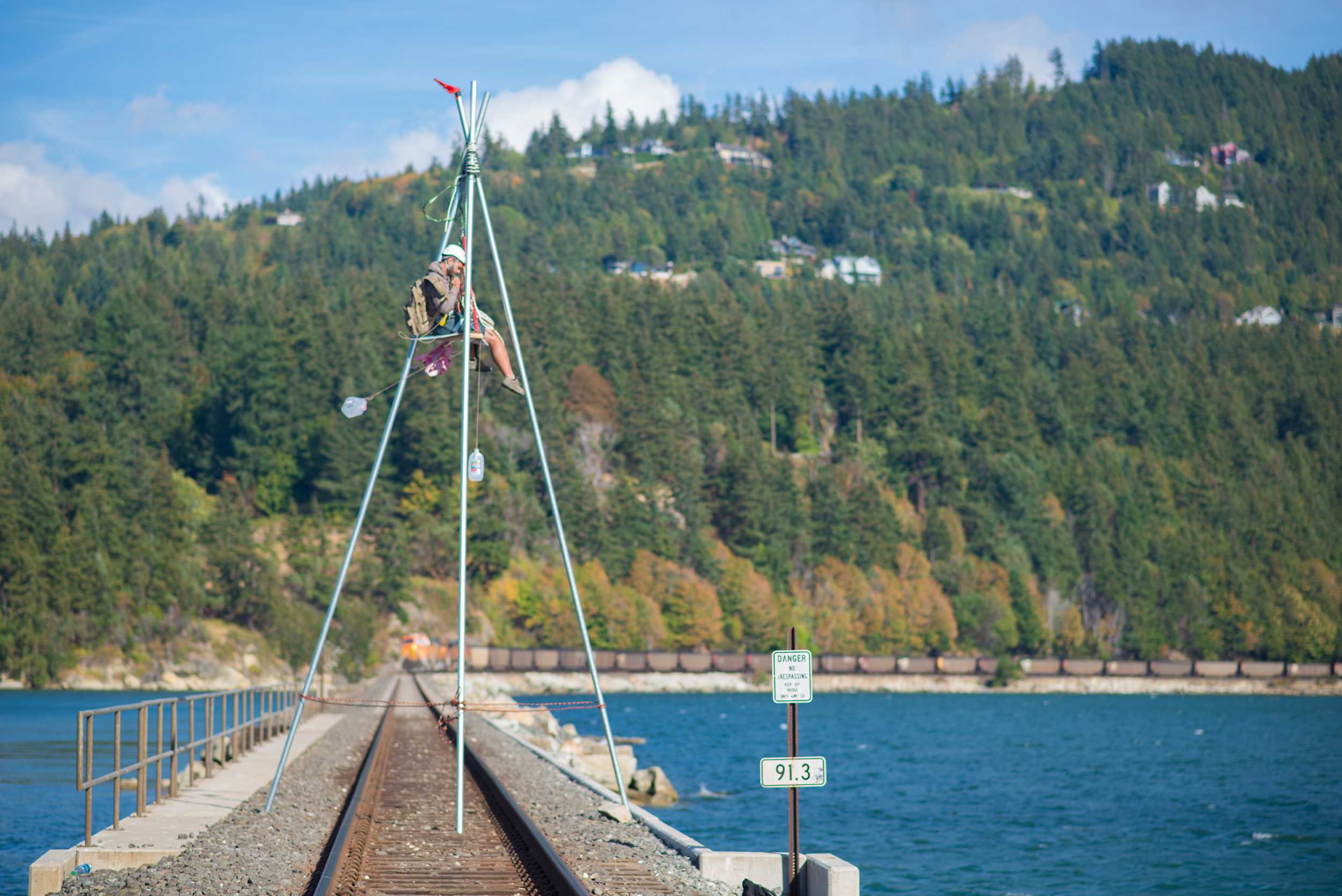
by Deep Green Resistance News Service | Aug 27, 2016 | Obstruction & Occupation
By Deep Green Resistance Seattle
A coal train entering Bellingham, Washington has been blockaded by a fossil fuel resistance group, including members of Deep Green Resistance. This blockade, part of an ongoing regional campaign against fossil fuels, has been standing strong for six hours – with no end in sight.
Beginning at four PM this afternoon, protestors erected a portable tripod structure in the middle of a rail bridge crossing Mud Bay south of Bellingham. One protester has climbed to the top and will stay until removed by police.
The organizers of the blockade say that fossil fuels must be stopped to save the planet from global warming.
When asked about her motivation for joining the resistance movement, one Deep Green Resistance member responded, “We won’t be complicit in a global catastrophe. The government and the capitalists are working together to kill the planet. We’re going to work together to stop them.”
With two refineries sitting north of town and a tar sands pipeline running underneath, Bellingham has been in the sights of the fossil fuel industry for decades. The struggle to keep fossil fuel transportation out of the small city has been ongoing. The Lummi Nation and other local resisters recently defeated plans for a major coal export terminal. However, coal merchants continue to push for the project.
The protest also delayed passenger trains, but organizers aren’t overly concerned. When asked about possible inconveniences to travelers, a protestor responded, “What’s inconvenient is losing your island to rising sea levels, or having your home flooded in Baton Rouge, or digging mass graves in Pakistan in anticipation of heat waves.” She also noted that Amtrak was notified to minimize delays in passenger transportation.
From Deep Green Resistance Seattle: http://deepgreenresistanceseattle.org/resistance/direct-action/activists-stage-coal-train-blockade-bellingham-train-stopped-5-hours-counting/











